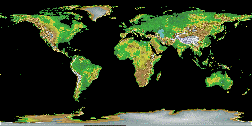




© Scott McDonald

P4: Extended 1*2*3 (Open Economy) CGE Model
This module extends the basic 1*2*3 model by adding policy instruments so that the model can be used to conduct policy analyses. The principles followed are based on work by Deverajan, Go, Robinson that was implemented by the World Bank in the late 1990s. The data used are derived from an augmented version of the GTAP database.
Programme
|
|
Topic |
Tasks |
Exercises |
Files (in order) |
|
P4:1 |
An extended 1*2*3 Model |
Adding government, investment, intermediate inputs and transfers from ROW to the simple 1*2*3 model |
Review code with government, investment, intermediate inputs and transfers from ROW |
|
|
P4:2 |
Changing country database |
Assign a SAM for a different country in the model |
Check that the model with new data is properly configured |
|
|
P4:3 |
Analysis of trade policy change |
Use Vietnam data/SAM |
Develop and implement an experiment file for policy analysis 1 |
|
|
P4:4 |
Analysis of aid reduction |
Use Ghana data/SAM |
Develop and implement an experiment file for policy analysis 2 |
|
Readings
Devarajan, S., Lewis, J.D. and Robinson, S., (1990). ‘Policy Lessons from Trade-Focused, Two-Sector Models’, Journal of Policy Modeling, Vol 12, pp 625-657.
Armington, P.S., (1969). ‘A Theory of Demand for Products Distinguished by Place of Production’, IMF Staff Papers, Vol 16, pp 159-178.
Sen, A.K., (1963). ‘Neo-classical and Neo-Keynesian Theories of Distribution’, Economic Record, Vol 39, pp 53-64.
de Melo, J. and Robinson, S., (1989). Product Differentiation and the Treatment of Foreign Trade in Computable General Equilibrium Models of Small Economies. Journal of International Economics 27 (1-2): 47-67